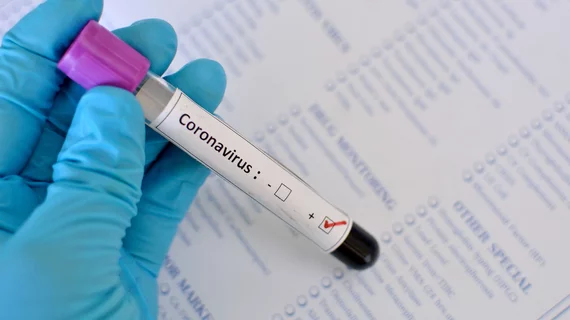CVD boosts risk of contracting coronavirus
The World Health Organization has formally declared novel coronavirus, the respiratory outbreak that originated in Wuhan, China, a global emergency.
China reported the first two cases of coronavirus to the WHO in December. Now, just one month later, physicians are staring down 10,000 cases of a virus we’re not sure how to treat, and it’s killed at least 213 people.
“At present, information regarding the epidemiology and clinical features of pneumonia caused by 2019 novel coronavirus is scarce,” Nanshan Chen and colleagues at Jinyintan Hospital in Wuhan, Hubei province, China, wrote in a Lancet account published Jan. 30. The first reported cases of coronavirus originated at Jinyintan Hospital, so Chen et al. are on the frontlines of the outbreak.
The authors’ report covered the first 99 cases of the virus, which presents as a respiratory illness but seems to be exacerbated by pre-existing conditions like heart disease and cerebrovascular disease. Of the 99 patients included in Chen and colleagues’ study, 40% had concomitant CVD, 11% had a digestive system disease and 13% had an endocrine system disease. Just 1% presented with a respiratory condition.
The first two deaths were among older men, one aged 61 and the other aged 69. Neither had an underlying chronic disease, but both were longtime smokers. The 61-year-old died of cardiac arrest 11 days after being admitted to Jinyintan Hospital and developing severe respiratory failure, heart failure and sepsis. The second patient was diagnosed with severe pneumonia upon admission and died nine days later of pneumonia, septic shock and respiratory failure.
Novel coronavirus has been compared in recent weeks to previous major outbreaks, including the SARS and MERS epidemics. In all three cases, more men than women have been infected, and people with underlying chronic disease—especially cardiovascular and cerebrovascular diseases and diabetes—have been more susceptible to infection.
By Jan. 25, 11 patients at Jinyintan Hospital had died, including the two men in their sixties. Of the remaining nine patients, eight had lymphopenia, seven had bilateral pneumonia and three had hypertension.
“The 2019 novel coronavirus was of clustering onset, is more likely to affect older men with comorbidities and could result in severe and even fatal respiratory diseases such as acute respiratory distress syndrome,” Chen et al. wrote. “Early identification and timely treatment of critical cases...are important. Effective life support and active treatment of complications should be provided to effectively reduce the severity of patients’ conditions and prevent the spread of this new coronavirus in China and worldwide.”

